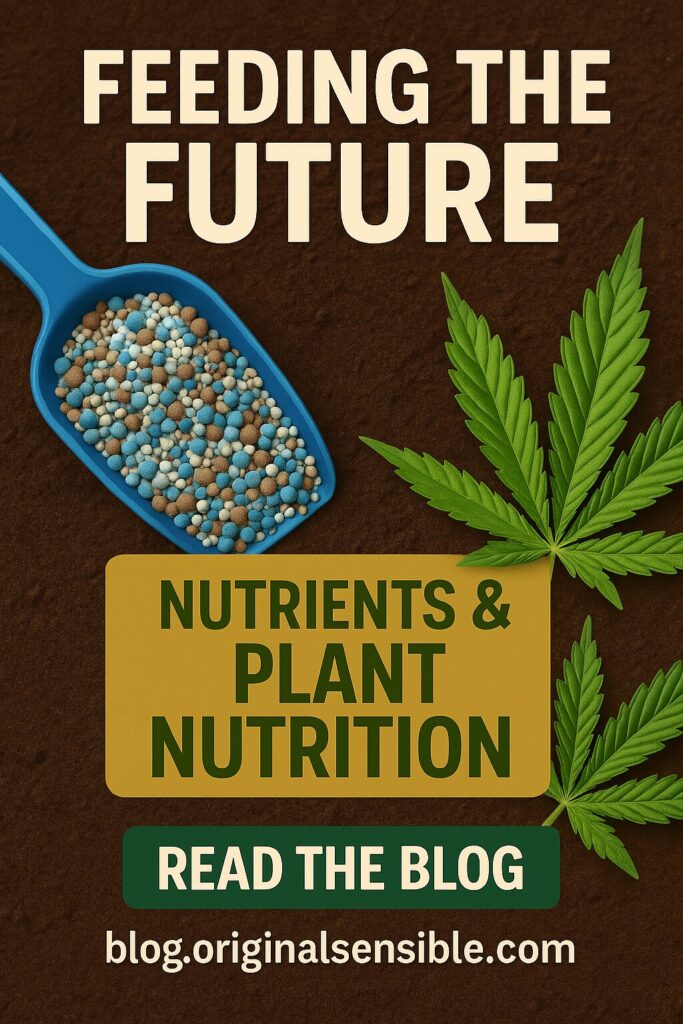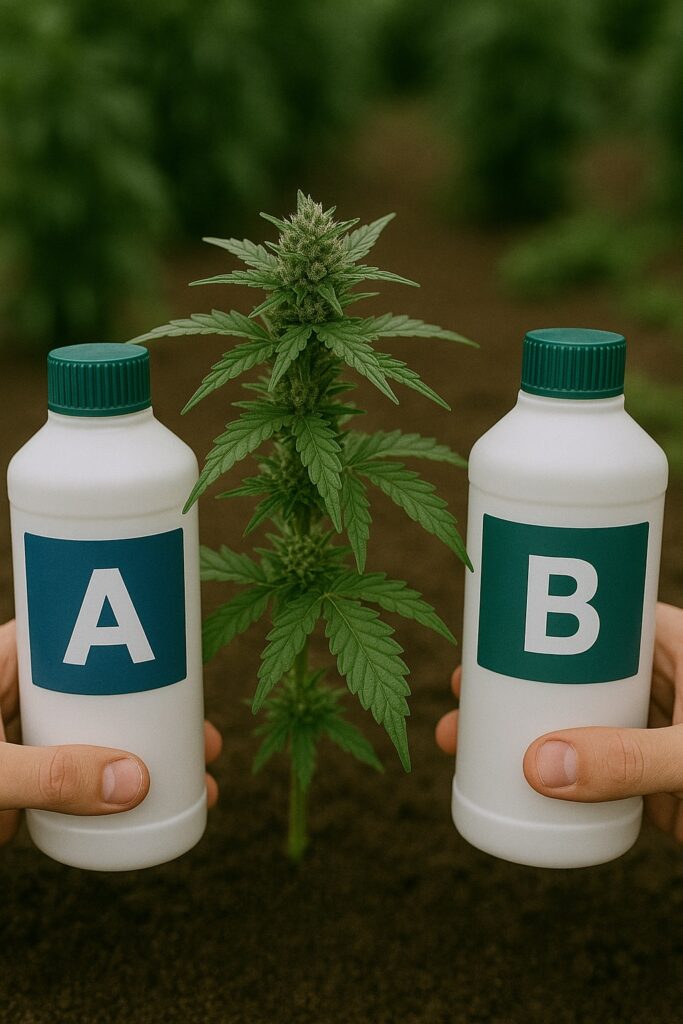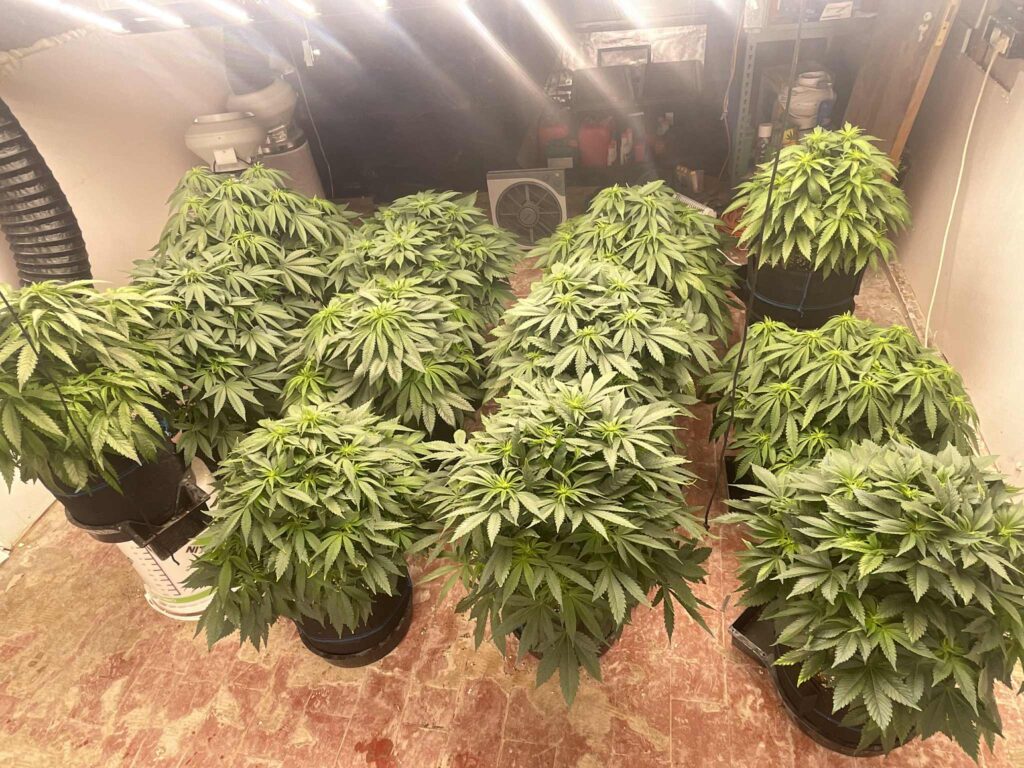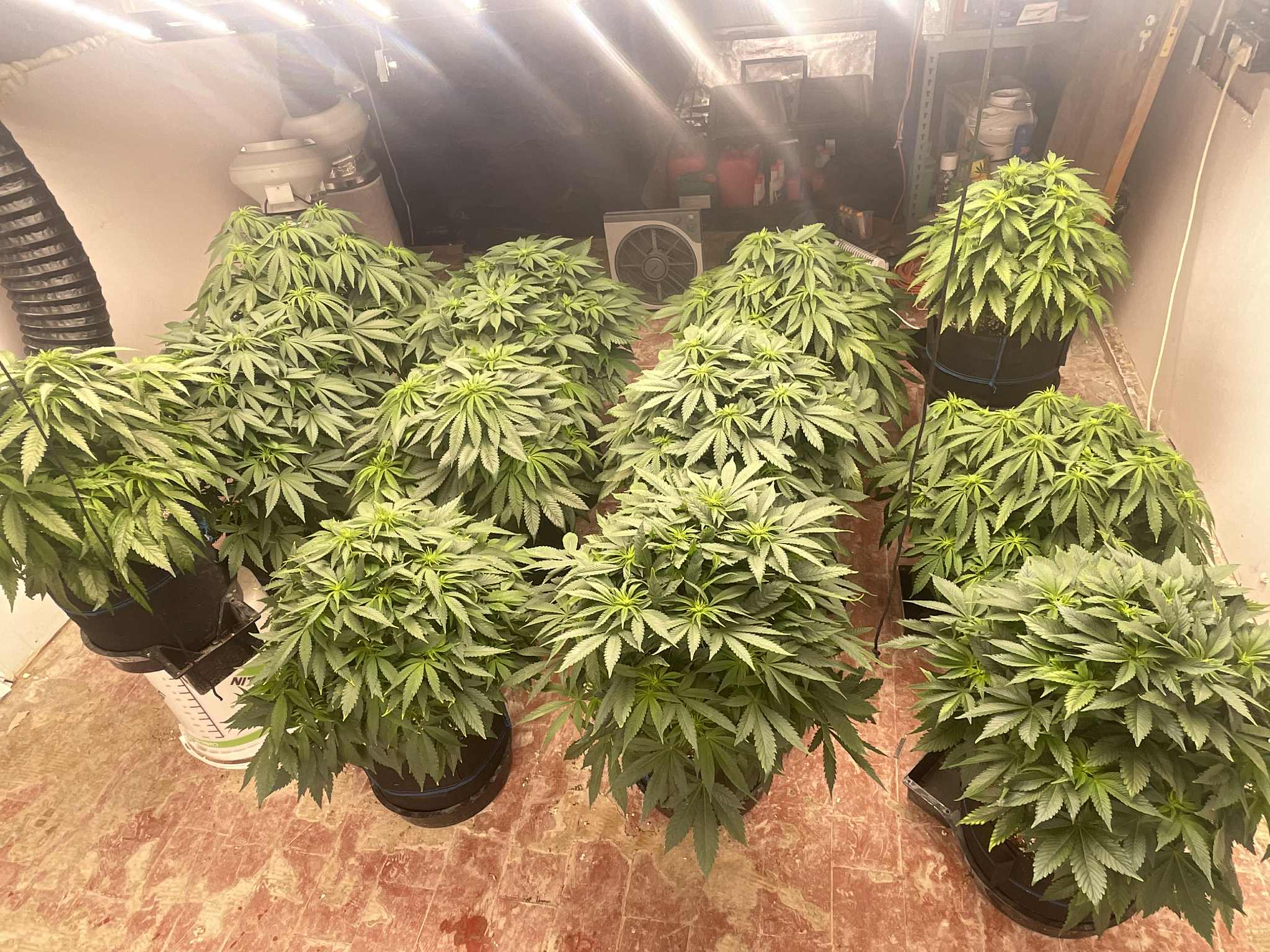
At the heart of every thriving plant is a well-fed system. Nutrients are the building blocks of life. They power photosynthesis, fuel growth, strengthen immune responses, and ultimately shape the size, strength, and quality of your final yield. No matter how perfect your light, water, and environment may be, if your plant is starved of the right nutrients at the right time, it will never reach its potential, no matter how good your genetics are. High THC strains and heavy yielders are great, but like people, the right nutrients bring greater gains;.

To understand nutrition, it helps to break it down into two key categories: macronutrients and micronutrients.
Macronutrients – The Big Three (Plus Three)
Macronutrients are the elements that plants need in the largest amounts. These include the famous NPK trio:
- Nitrogen (N) – Fuels leafy growth, chlorophyll production, and the plant’s overall green vigour.
- Phosphorus (P) – Supports root development, early growth, and later, flowering and fruiting.
- Potassium (K) – Strengthens stems, enhances water regulation, and improves resistance to disease and stress.
Alongside these primary macronutrients are the secondary macronutrients:
- Calcium (Ca) – Crucial for cell wall structure and root development.
- Magnesium (Mg) – Central to chlorophyll molecules and photosynthesis.
- Sulphur (S) – Important for enzyme production and overall metabolism.
These six elements are required in relatively large quantities and must be present in the right balance for healthy plant development.
Micronutrients – The Small but Mighty
Micronutrients are needed in much smaller amounts, but they’re no less important. These include:
- Iron, Manganese, Zinc, Copper, Boron, Molybdenum, and Chlorine
A deficiency in any one of these can cause serious disruptions in plant development; yellowing leaves, twisting or curling growth, weak stems, or stunted flowering. Think of them as trace ingredients in a recipe—small in dose, but vital for the final outcome.
Mobility Matters – How Nutrients Travel
It’s not just what nutrients you provide, how mobile they are inside the plant. Some nutrients are mobile, meaning the plant can move them from older leaves to new growth when needed (e.g., nitrogen, magnesium, phosphorus). Others are immobile and cannot be relocated once fixed into place (e.g., calcium, iron, boron).
This matters when diagnosing problems. Deficiencies in mobile nutrients show up in older leaves first, while immobile deficiencies appear in new growth. Understanding nutrient mobility helps you make faster, more accurate corrections when something looks off.
Feeding by Stage – What Plants Need and When
Nutrient needs change throughout the life cycle of the plant:
- Seedling Stage – Very minimal feeding, if any. Too much nutrition can burn tender roots. A light root stimulator or low-dose microbial inoculant may be all that’s needed.
- Vegetative Stage – Nitrogen is king here, along with balanced calcium, magnesium, and micronutrients to fuel explosive green growth and root expansion.
- Flowering Stage – The spotlight shifts to phosphorus and potassium. Nitrogen is reduced, as excess nitrogen can inhibit flowering. Plants also need a steady supply of magnesium and sulphur during this phase.
Fine-tuning your nutrient ratios based on these stages is one of the most effective ways to boost yields and improve quality.
The pH Connection – Nutrient Lockout Is Real
Even if you’re feeding the right nutrients, your plant may still starve if the pH is off. pH determines the solubility of nutrients, i.e., whether or not they are available for uptake by roots. In cannabis cultivation, the ideal pH range is:
- Soil: 6.0–7.0
- Coco or Hydroponics: 5.5–6.5
Outside these ranges, nutrients can become locked out, meaning they’re present but unavailable. Always test your water and runoff regularly. A healthy root zone begins with balanced pH.
Less is More – The Danger of Overfeeding
More nutrients do not equal more growth. In fact, overfeeding can cause nutrient toxicity, leading to salt buildup, root burn, or a condition known as nutrient lockout—where the excess of one element prevents others from being absorbed. Ironically, overfed plants often show deficiency symptoms because of this competitive imbalance.
That’s why experienced growers follow the golden rule: “Start low, go slow.” Feed lightly, observe, and adjust. Healthy plants are responsive, not force-fed.
The Big Picture – Feeding with Wisdom
Feeding your plant isn’t about dumping bottles of nutrients into a pot. It’s about understanding the plant’s changing needs, recognising the signals it gives you, and creating the right conditions for optimal uptake.
Get that right, and you’re not just feeding a plant—you’re cultivating a masterpiece.

And that’s a wrap…
You’ve now journeyed through all nine essential needs of a plant. This series has laid the groundwork for growing knowledge that’s rooted in science and elevated by practical wisdom.
But this is just the beginning.
Now, as we bring this series together, it’s time to reflect on everything you’ve learned and where this knowledge is taking you next.
In our Series Conclusion — Laying the Foundation: What You’ve Learned & Where We’re Headed — we’ll recap the essentials, solidify your understanding, and prepare you for the next stage of your growing journey.

Want to get the Series Conclusion before anyone else? Subscribe now and we’ll send you Laying the Foundation: What You’ve Learned & Where We’re Headed ahead of its public release. Stay informed, stay ahead, and keep growing with confidence.







